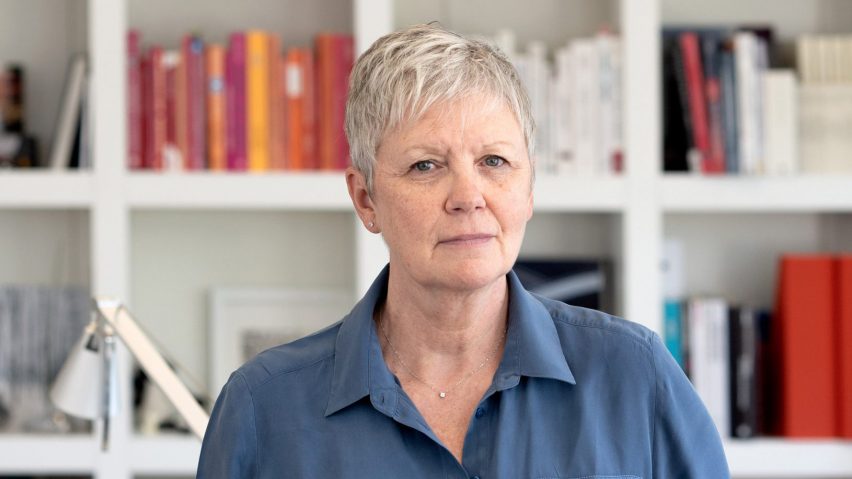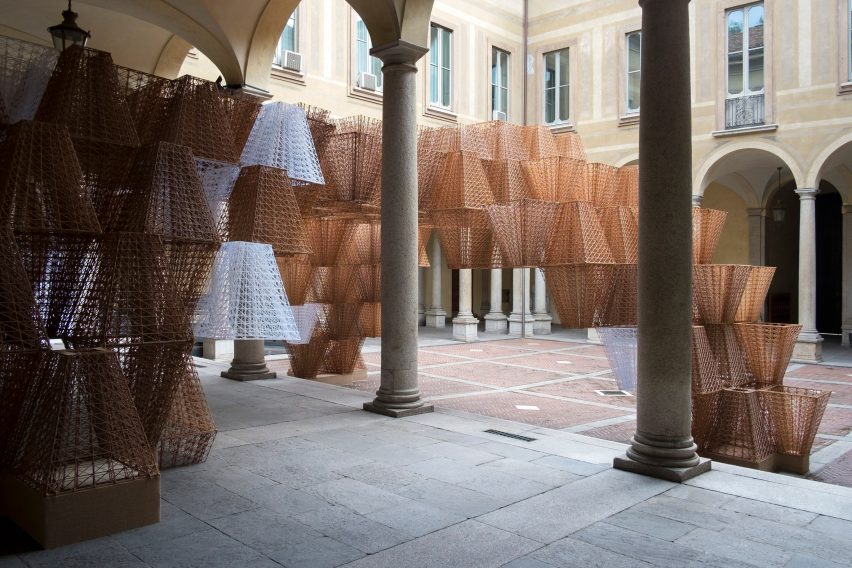
"We want to shift the posture of design" says Anne Asensio of Dassault Systèmes
Architects and designers should stop feeding consumerism and instead harness technology to build a better world according to Anne Asensio, vice president of design experience at Dassault Systèmes.
Speaking in a live talk on Dezeen last week, Asensio said she wanted to "shift the posture of design" by providing software tools to help designers develop more sustainable materials and processes.
"Design in the past was mostly part of this consumerist society," said Asensio, who heads the design team at the French brand, which produces 3D modelling software including Catia and SolidWorks.
"Technology seems to be just a hyper-accelerator of consumerism," she said. "So we are questioning how we can take technology to actually reverse this situation."
Dezeen and Dassault Systèmes collaborating on Design for Life
The live talk marked the launch of Design for Life, a collaboration between Dezeen and Dassault Systèmes, which will explore how architects and designers are using advanced software to explore more sustainable ways of making buildings and objects.
The collaboration will also follow the progress of a project by architect Arthur Mamou-Mani that has been commissioned by Dassault Systèmes to showcase the brand's approach.
The project will explore how 3D-printed bioplastic can be used on an architectural scale.
"If technology is not here to help us get over it and get past this new kind of environmental crisis that we're facing, then really, I don't care about technology, I don't care about software," said Mamou-Mani in the live talk.
"And that's what our office is focusing on. We're focusing on projects that can make a difference. "
Installation will be made from 3D-printed bioplastic
The installation will feature windscreen-sized panels of translucent printed polylactic acid (PLA) – a compostable bioplastic made of natural sugars extracted from plants – combined to create a physical installation that can be recycled and reused afterwards.
The project builds on Conifera, an installation composed of printed PLA modules that Mamou-Mani completed for fashion brand COS during Milan design week last year.

Printed PLA could eventually become a viable method of building sustainable architecture, Mamou-Mani believes, although there are hurdles to overcome, including the flammability of the bioplastic.
"We need to fireproof this," Mamou-Mani said. "You can fireproof it with epoxies and really bad stuff but we need to learn how to fireproof it not with bad stuff."
"There are metals that you can put in but what happens to the compostability?" he added. "There's a lot of research to do. This is a new material. So this is my call for action for that."
PLA "not perfect"
Other drawbacks of PLA include the fact that a lot of agricultural land is required to produce it at scale.
"I didn't know that PLA was that bad in terms of land use," Mamou-Mani said. "I find this interesting because it makes you rethink how we grow it. Which crops should we use? Can we do vertical farming?"
"So it's not perfect," he added, saying: "Perfectionism can be the enemy of innovation. And a lot of time we look for the ultimate solution. And therefore we ignore processes that allow us to make step-by-step progress."
Mamou-Mani is experimenting with other natural materials including earth, which he described as "the most sustainable material there is," as well as clay and sand.
Earlier this year he worked with architect Chris Precht to create outdoor furniture printed from sand in Saudi Arabia.
Asensio added that architects and designers should help pioneer new materials that can be reused instead of thrown away after use.
"Now we use them and we discard them," she said. "It's very important designers are at the forefront, testing and pushing, moving in the right direction step by step."
Earlier this week Dassault Systèmes launched a competition for design solutions that address the United Nations Sustainable Development Goals.